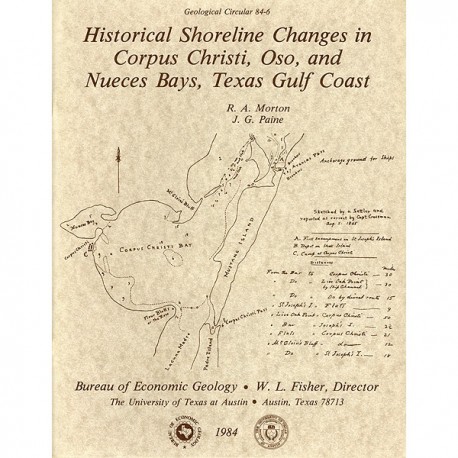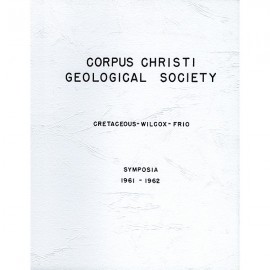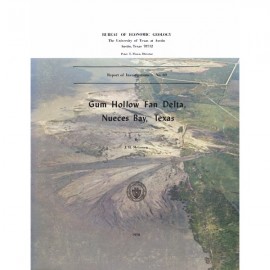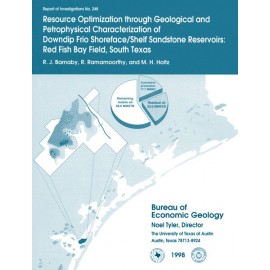Geological Circulars
-
Books & Reports
- Reports of Investigations
- Guidebooks
- Udden Series
- Geological Circulars
- Down To Earth
- Atlases of Major Oil and Gas Reservoirs
- Texas Memorial Museum Publications
- Environmental Geologic Atlas of the Texas Coastal Zone
- Mineral Resource Circulars
- Other Reports
- Seminars and Workshops
- Handbooks
- Submerged Lands of Texas
- Symposia
- Annual Reports
- Open File Reports
-
Maps & Cross Sections
- Thematic Maps
- Miscellaneous Maps, Charts & Sections
- Geologic Atlas of Texas
- STATEMAP Project Maps
- Geologic Quadrangle Maps
- Cross Sections
- Highway Geology Map
- Energy and Mineral Resource Maps
- Shoreline Change and Other Posters
- Wilcox Group, East Texas, Geological / Hydrological Folios
- Bouguer Gravity Atlas of Texas
- River Basin Regional Studies
- Featured Maps
- Posters
- Teachers & the Public
-
Geological Society Publications
- Gulf Coast Association of Geological Societies
- Alabama Geological Society
- Austin Geological Society
- Corpus Christi Geological Society
- Houston Geological Society
- Lafayette Geological Society
- Mississippi Geological Society
- New Orleans Geological Society
- South Texas Geological Society
- GCS SEPM Publications
- Historic BEG & UT Series
Historical Shoreline Changes in Corpus Christi, Oso, and Nueces Bays, Texas Gulf Coast
GC8406
A free, digital version of this publication can be found on: Texas ScholarWorks
GC8406. Historical Shoreline Changes in Corpus Christi, Oso, and Nueces Bays, Texas Gulf Coast, by R. A. Morton and J. G. Paine. 66 p., 26 figs., 1 table, 3 appendices, 1984. ISSN: 0082-3309. Print.
To purchase this publication as a PDF download, please order GC8406D.
ABSTRACT
Changes in the position and stability of shorelines around Corpus Christi, Oso, and Nueces Bays, Texas Gulf Coast, were documented using historical-monitoring techniques. This was accomplished by comparing shorelines depicted on topographic surveys (dated 1867 to 1882) and aerial photographs (taken in 1930 to 1937 and in 1982), measuring the magnitude (distance) of shoreline movement at specific sites, calculating the rates of change for particular time periods (late 1800's to 19301s, 1930's to 1982, and late 1800's to 1982), and summarizing the magnitudes and rates of change in tables and on maps. Geological interpretations of the maps and photographs were used in conjunction with meteorological data and historical records to explain the important shoreline stability trends revealed by the maps and tabulated data.
Unprotected sediments forming the margins of Corpus Christi, Oso, and Nueces Bays are modified by natural coastal processes and by human activities that together cause shoreline movement. The unstabilized shorelines include high, nearly vertical clay bluffs, moderate slopes composed mainly of sand, salt-water marshes, sand and shell beaches, and newly formed areas filled by dredged material. Composition of the shoreline material and orientation of the shoreline with respect to prevailing wind directions and wave fetch largely determine the response and consequent movement of the shoreline. In some areas, property owners have attempted to stabilize the shoreline and prevent further erosion by building seawalls and bulkheads and by using riprap to dissipate wave energy.
Contributing to shoreline changes are (1) regional and worldwide climate, (2) local changes in relative sea-level position, (3) local alterations in sediment supply, (4) frequent and intense storms, and (5) human activities. Historical data compiled for these factors indicate that warming temperatures, rising sea level, decreasing sediment supply, recurring severe storms, and ongoing human activities all promote continued erosion of most unprotected bay shorelines. Frequent periods of high waves as well as reduction and disruption of longshore sediment transport are the primary causes of the continued retreat of unprotected shorelines of Corpus Christi and adjacent bays.
Keywords: bays, shoreline changes, coastal processes, geologic hazards, Texas Gulf Coast, Texas
Citation
Morton, R. A., and Paine, J. G., 1984, Historical Shoreline Changes in Corpus Christi, Oso, and Nueces Bays, Texas Gulf Coast: The University of Texas at Austin, Bureau of Economic Geology, Geological Circular 84-6, 66 p.






